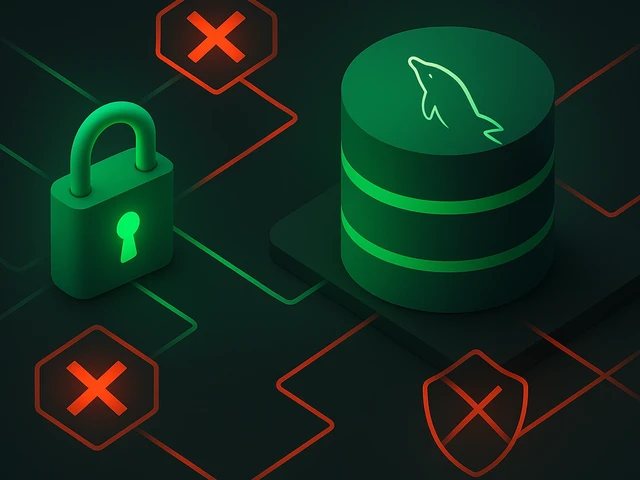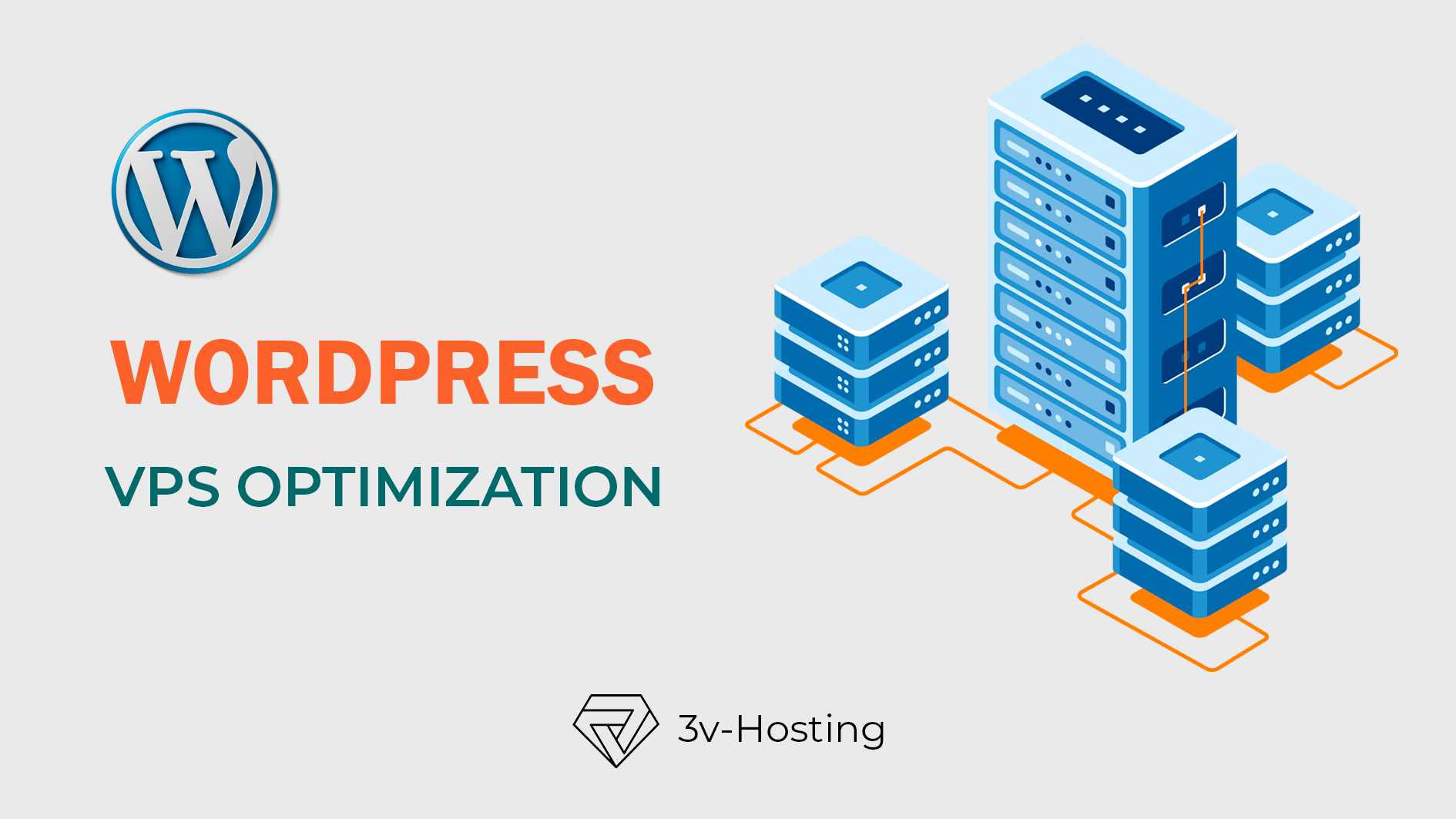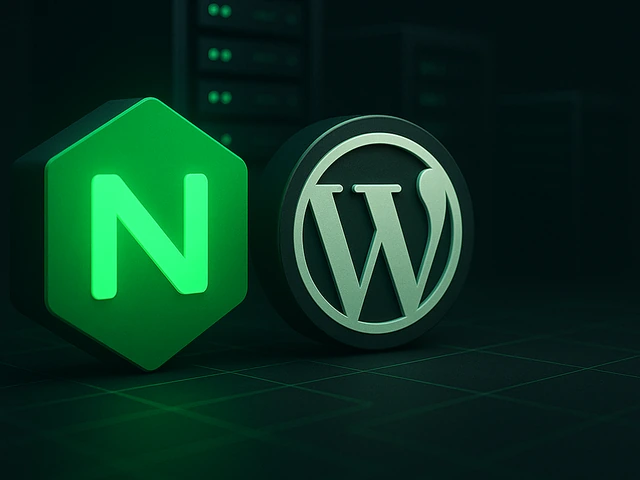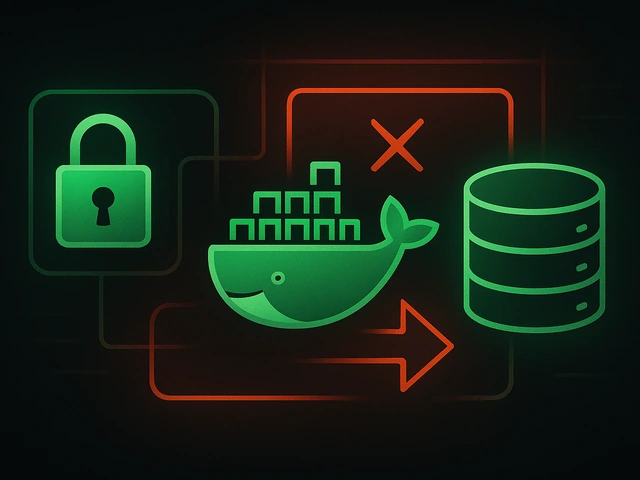
MySQL is a popular open-source relational database management system used by many businesses and organizations. One of the common tasks in MySQL administration ...
3v-Hosting Blog
9 min read
WordPress has become a popular platform for creating websites and blogs due to its user-friendly interface and extensive customization options. However, as your website grows, you may encounter performance issues that can affect the user experience. This is where optimizing your VPS (Virtual Private Server) running WordPress comes into play. In this guide, we'll explore why using a VPS server for WordPress is beneficial and give practical tips for optimizing its performance.

WordPress is a popular Content Management System (CMS) that allows users to create and manage websites and blogs with ease. It offers a wide range of themes, plugins, and customization options, making it suitable for beginners and advanced users alike.
WordPress simplifies website management by providing intuitive tools for content creation, publishing, and customization. Its user-friendly interface and extensive documentation make it accessible to users of all skill levels, from novice bloggers to experienced web developers.
Moreover, WordPress is open-source software, meaning it's freely available for anyone to use, modify, and distribute. This open-source nature has contributed to its widespread adoption and vibrant community of developers, designers, and users who contribute themes, plugins, and support resources.
Using a VPS server for WordPress provides several advantages over shared hosting. Unlike shared hosting, where resources are shared across multiple websites on a single server, VPS provides dedicated resources such as CPU, RAM, and storage, ensuring better performance and reliability.
With a VPS, you have more control over your server configurations, allowing you to optimize your WordPress installation for maximum efficiency. You can configure server settings, install custom software, and implement security measures tailored to your specific needs and requirements.
Additionally, VPS hosting offers scalability, allowing you to easily change the amount of server resources as your website grows or traffic fluctuates. This flexibility ensures that your WordPress website can handle increased traffic and resource demands without downtime or performance degradation.
Speed is crucial for the success of your WordPress website. A fast-loading website not only improves user experience but also has a positive impact on search engine rankings. Studies have shown that users are more likely to abandon a website if it takes too long to load, highlighting the importance of optimizing website speed.
When a website loads slowly, users are more likely to leave and seek information elsewhere. This can result in higher bounce rates, decreased engagement, and ultimately, loss of potential customers or subscribers. In contrast, a fast-loading website creates a positive user experience, encourages visitors to stay longer, and increases the likelihood of conversion.
Moreover, website speed is a key factor in search engine optimization (SEO). Search engines like Google consider page speed when ranking websites in search results. A faster website is more likely to rank higher in search engine results pages (SERPs), leading to increased visibility and organic traffic.
Additionally, website speed impacts various other metrics such as time on site, page views, and conversion rates. A slow website can negatively affect these metrics, resulting in lower engagement and fewer conversions. Therefore, optimizing website speed is essential for maximizing user engagement, improving search engine rankings, and driving conversions.
To check the speed of your WordPress website, you can use online speed testing tools such as GTmetrix or Google PageSpeed Insights. These tools analyze your website's performance and provide insight into the factors affecting its speed.
GTmetrix analyzes your site's performance and provides a detailed report with recommendations for improvement. It evaluates metrics such as page load time, overall page size, and the number of HTTP requests.
Google PageSpeed Insights evaluates your website's performance on both mobile and desktop devices and provides optimization recommendations based on Google best practices.
Using these tools, you can identify performance issues and prioritize optimizations to improve the speed and overall performance of your WordPress.
Several factors can slow down a WordPress website, including:
Large Image Files: Unoptimized images with large file sizes can significantly increase page load times.
Excessive Plugins: Using too many plugins or poorly coded plugins can add unnecessary overhead and slow down your website.
Outdated Themes or Plugins: Using outdated themes or plugins can lead to compatibility issues and performance degradation.
Poor Server Optimization: Inefficient server configurations, slow server response times, and inadequate resources can impact website speed.
Render-Blocking Scripts: JavaScript and CSS files that block rendering can delay page loading and affect user experience.
Too Many HTTP Requests: Excessive HTTP requests, such as loading multiple external scripts or stylesheets, can increase page load times.
Identifying and addressing these issues is essential for improving website speed and performance.
Here are ten practical tips for optimizing your WordPress VPS to increase site stability and speed:
Image optimization: Images play a significant role in website performance. Large image files can slow down page load times, especially on mobile devices or slow internet connections. To optimize images, you can use tools like Photoshop or online services like TinyPNG to compress and resize images without sacrificing quality. By reducing image file size, you can improve page load time and overall website performance.
Minimize plugins: While plugins can add functionality to your WordPress website, using too many plugins can impact performance. Each plugin adds additional code and overhead, increasing server load and potentially causing conflicts. To optimize your WordPress VPS, limit the number of plugins installed on your website and choose lightweight alternatives whenever possible. Before installing a new plugin, carefully evaluate its necessity and impact on performance.
Keep WordPress, Themes, and Plugins Updated: Regularly updating your WordPress core, themes, and plugins is essential for ensuring compatibility, security, and performance. Updates often include bug fixes, performance improvements, and security patches that can enhance your website's stability and speed. Make it a habit to check for updates regularly and apply them promptly to keep your WordPress VPS optimized and secure.
Enable caching: Caching mechanisms help reduce server load and improve website speed by storing static copies of your website's pages and assets. When a user visits your website, the cached version is served instead of generating the page dynamically, resulting in faster load times. WordPress offers various caching plugins like W3 Total Cache and WP Super Cache, which you can install and configure to optimize your VPS performance.
Use a CDN: A Content Delivery Network (CDN) distributes your website's static assets, such as images, CSS, and JavaScript files, across multiple servers worldwide. By serving content from the nearest server to the user's location, a CDN reduces latency and improves content delivery speed. Integrate your WordPress website with a CDN like Cloudflare or Amazon CloudFront to optimize your VPS performance and provide a faster and more reliable user experience.
Optimize your database tables: Over time, your WordPress database can accumulate unnecessary data, such as post revisions, spam comments, and transients, which can impact database performance. Regularly optimizing and cleaning your database tables can improve database performance and reduce server load. WordPress offers plugins like WP-Optimize or WP Rocket that automate the optimization process and help keep your database tables lean and efficient.
Monitor server resource usage: Monitoring server resource usage is essential for identifying performance bottlenecks and ensuring your VPS can handle increased traffic. Keep an eye on CPU, RAM, and disk usage using server monitoring tools or built-in server monitoring features. If you notice resource constraints or performance issues, consider upgrading your VPS plan or optimizing server configurations to accommodate the increased workload.
Enable GZIP compression: GZIP compression reduces file size by compressing text-based files like HTML, CSS, and JavaScript before transmitting them to the user's browser. Enabling GZIP compression on your server can significantly reduce bandwidth usage and improve website speed, especially for users with slower internet connections. Most web servers support GZIP compression, and you can enable it through server configurations or using plugins like GZip Ninja Speed Compression.
Implement lazy loading: Lazy loading is a technique that defers the loading of non-essential resources, such as images and videos, until they are needed. By only loading content when it's in the viewport or as the user scrolls down the page, lazy loading reduces initial page load time and conserves bandwidth. Implement lazy loading of images and videos on your WordPress website using plugins like Lazy Load by WP Rocket or a lightweight theme that includes lazy loading functionality.
Choose a lightweight theme: The theme you choose for your WordPress website can significantly impact its speed and performance. Lightweight themes are designed to minimize code bloat and prioritize speed and performance. When selecting a theme for your WordPress VPS, look for themes optimized for speed, with clean code, minimal JavaScript dependencies, and efficient design principles. Avoid bloated themes with excessive features and customization options that can slow down your website. Choose a lightweight theme that aligns with your design preferences and performance goals to optimize your WordPress VPS for speed and stability.
By applying these practical tips, you can optimize your WordPress VPS for maximum performance and provide a fast, reliable experience for your site visitors.

Learn how IP addresses work: IPv4 vs IPv6, public and private IPs, DNS resolution, routing, security basics, and how IPs are used in real server and cloud infra...

Accelerating WordPress at the Nginx level: correct PHP-FPM settings, try_files, static files, caching, Brotli, wp-login protection, and secure headers for stabl...

Effective backup strategies for Docker applications: how to protect volumes, data, and configurations while avoiding common mistakes, and quickly restore servic...